Navigating the waters of enterprise sales demands more than just a steady hand—it requires a meticulously crafted enterprise sales methodology.
As you steer your organization towards success, establishing an effective enterprise sales process is crucial.
In this blog, we’ll guide you through the intricate steps of setting up your enterprise sales methodology.
From identifying your target clientele to refining your sales strategies, we’ve curated essential tips to elevate your sales game.
So, settle in, and let’s embark on this journey towards optimized enterprise sales together.
We’ll answer your top questions, like what are the enterprise sales stages?
And what does enterprise sales mean?
We’re going to cover all the ins and outs of enterprise sales stages so you know exactly how to position your company for sustainable sales growth.
What is enterprise sales?
First, let’s look at a definition for enterprise sales.
In the simplest terms, choosing enterprise sales means selling to large companies as opposed to small or medium-sized ones.
So, since your B2B sales are operating on an enterprise level, they’re referred to as enterprise sales.
Meaning that there can be anything from software enterprise sales to construction enterprise sales—the distinction is in who you’re selling to and not what you’re selling.
That sounds simple, right? Conceptually speaking, it is.
The realities behind enterprise sales are a bit more complicated, however. Let’s explore those, starting with a step-by-step breakdown of the enterprise sales cycle.
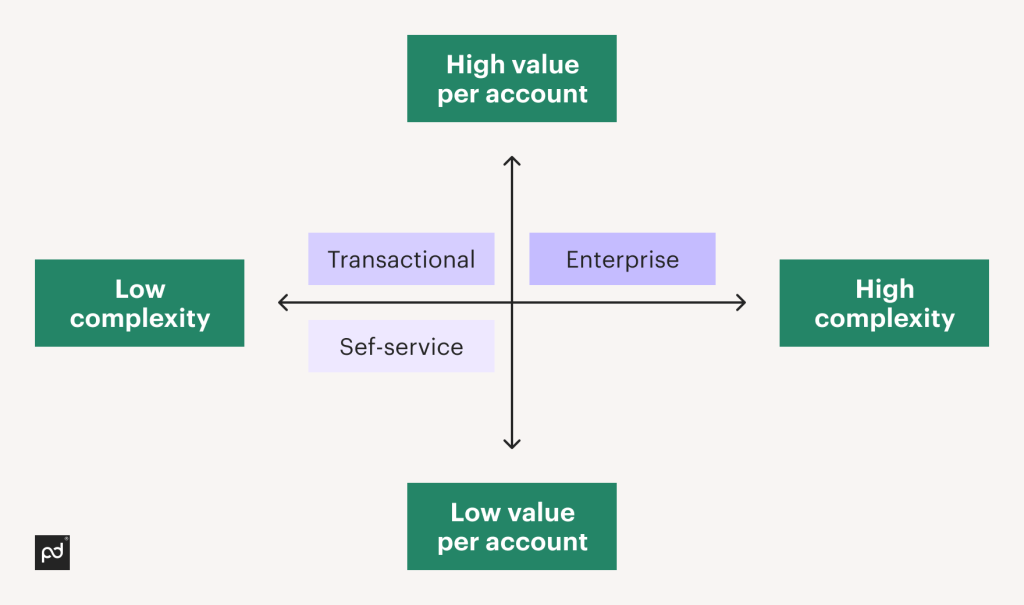
What is enterprise tech sales?
Both enterprise tech sales and regular enterprise sales involve targeting and selling to large corporations rather than smaller or medium-sized businesses.
But selling technology solutions to large entities like corporations, governmental bodies, and nonprofit organizations constitutes enterprise tech sales.
This facet of sales, often referred to as “complex sales,” is characterized by its involvement in high-value transactions, extended sales timelines, and the engagement of multiple decision-makers.
Steps in the enterprise sales cycle
In order to create the kinds of tools your enterprise sales teams will need to work as productively as they can— like a sales process map —you’ve first got to know exactly what your enterprise sales cycle looks like.
The following steps give you a clear run-down of how you can optimize your strategy of selling to enterprise customers.
1. Discovery
The first step in enterprise sales stages is known as the discovery stage.
As much as sales teams might wish it, not every enterprise customer can be a perfect match for your company. That’s why this stage exists.
In the discovery stage of the enterprise sales cycle, you’ll gauge prospective customers to see whether their business would be a good fit for yours.
This involves identifying their pain points, as well as asking them questions that will help assess their compatibility with your company.
For example, you might ask them about their goals, timelines, challenges, or any other points that will factor into their identity as a customer for your business.
2. Diagnosis
Enterprise sales processes typically feature a long sales cycle.
That means it’s crucially important you properly get to know leads and prospects, so you can identify things like their pain points instantly.
In this stage of the enterprise sales cycle, you’ll figure out how you can help your potential enterprise customer.
Do they have areas in which they’re notably struggling? Are they falling behind their competition in any way?
Could they use your help to stand out within their industry?
One way or another, you’ve got to make sure you’re doing your research so you can prove why the client needs you.
The more information you have, the more you can streamline the sales process.
3. Design
Now that you’ve got all the intel you need to build a bespoke solution for your customer, it’s time to move to the next and third step in enterprise sales stages.
You already know your target client’s priorities.
Maybe they place heavy emphasis on CRM, or maybe their number one priority is forecasting, or something else altogether.
You’ll have gathered this information in the two previous enterprise sales cycle stages. You can then apply that knowledge to your own products.
If you’re customizing a SaaS solution for them, for example, you’ll want to make sure it arrives with their favorite integrations already pre-installed.
This helps you impress your enterprise client from the get-go, ensuring your design has the best possible impact.
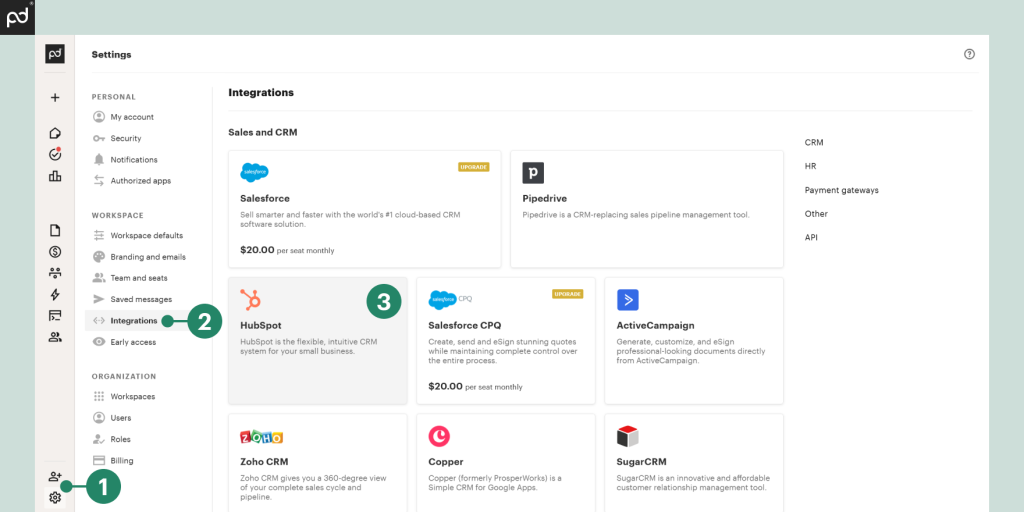
4. Delivery
Lastly, it’s time to bring your enterprise sales process to a close.
Your sales team is responsible for delivering the product that you promised within a reasonable timeframe and according to the customer’s specifications.
During this stage of the enterprise sales process, you’ll also want to establish the kinds of metrics you’re going to use to evaluate the success of your product for your customer.
After all, when you’re able to quantify your success, you’ll have concrete proof that your product improves the way customers’ businesses run.
Commercial SMB sales vs. enterprise sales
So, what’s the real difference between making software enterprise sales as opposed to SMB ones?
We’ve got to clear one thing up; enterprise selling is fundamentally and structurally different from SMB selling.
They’re not two variants of the same process because they’re two fully distinct processes.
With that said, let’s closely examine the ways in which they differ:
Pain points
If you want to truly master the art of selling to enterprise customers, you have to become an expert in understanding and diagnosing your customers’ pain points.
Your enterprise sales strategy will generally hinge on your ability to do this,and these are very different depending on the type of business you’re selling to.
SMBs will typically concern themselves with quick growth. They’ll need scalable solutions that let them grow rapidly in a short amount of time.
On the other hand, enterprises have a wide variety of pain points.
Those can range from the desire to boost their bottom line, to the need for better budgeting, to growth concerns, and much more.
Priorities
A long enterprise sales cycle isn’t going to cut it for an SMB, because they need short-term, immediate solutions.
They don’t have the resources to tide them over until a later point; they need something that works right now and can’t invest in higher-risk long-term solutions.
Enterprises have the luxury of focusing on the long term.
So, for a solution that focuses on improving customer relationships (for example), an enterprise can choose one that emphasizes slow, steady growth throughout a longer period.
If you’re wondering what this means for enterprise tech sales, it may be that you need to become an expert in the enterprise’s existing tech so you can figure out how your solution best integrates.
Buying journey
As mentioned, the enterprise sales cycle has longer sales cycles.
Their buying journeys tend to follow specific, predetermined trajectories.
If that sounds like your ideal customer profile, an enterprise would be the best target for your sales funnel.
SMBs, however, tend to need to complete their buying journeys in under three months.
That means their journeys will be much more hurried and typically follow less structured paths.
It also means that anything which can speed up the sales process is a godsend for your sales team.
Fortunately, PandaDoc can help you automate proposals, easily track their progress, and more— all sure to maximize the limited time available to your reps.
Decision makers
When you get in touch with a business to sell your products or services to them, you’ll ideally want to speak to the person, team, or department in charge of making the final call on your product as soon as possible.
Those decision-makers aren’t the same across all kinds of companies, though.
Of course, enterprises have the room and resources for a larger number of decision-makers, especially tech enterprises.
They’ll rely on multiple stakeholders to sign off on a single purchase decision, so it’s something more of a democratic process.
SMBs don’t tend to structure their decision-making in this way.
They’ll usually leave that process to one single person.
So, instead of winning over and building a relationship with a whole team, you’d communicate with just one representative.
Content
Enterprise sales are also called complex sales, and for good reason.
Enterprises typically consult multiple different pieces of content across multiple platforms before considering a purchase decision.
So, you’ll have to make sure you’ve got great content across the board for your enterprise sales strategy to shine.
You can’t rely on just one source of information to impress an enterprise; the content on your website, LinkedIn page, social media accounts, and more has to be above and beyond your competitors.
SMBs don’t work in the same way.
They rely on third-party reviews and forum discussions—social proof persuades them.
Providing an SMB with demos of your product won’t be as much help as it would when selling to enterprise customers.
Enterprise sales vs. SMB sales: Which to choose?
In the same way that B2B sales are fundamentally different from B2C ones, effective sales strategies with large companies as customers often look very different from those targeted at smaller businesses.
If SMB sales seem like the better choice for you, that’s likely because your services aren’t suitable for use on a larger scale.
For example, if your solutions are mostly targeted toward startups with very few employees, enterprise sales simply won’t work for you.
On the other hand, selling to enterprise customers is ideal for companies that are equipped to sell flexibly over long periods of time.
They rely on building strong, lasting relationships between businesses. If that sounds like you, enterprise sales are likely your best option.
Of course, if you’re currently geared towards SMB sales, that doesn’t mean you can’t swap over to enterprise sales in the future.
It just means you’ve got to do the work and the research associated with enterprise sales processes, so you don’t accidentally recycle old strategies.
What is enterprise sales methodology?
Great sales strategists know there’s much more to effective enterprise sales than simply being able to close deals quickly.
You’ve got to have a fantastic enterprise sales methodology, and that sort of thing, unfortunately, doesn’t spring into being on its own.
The tips below will help guide you in the formulation and shaping of your enterprise sales strategy:
1. Set objectives
It’s all well and good to reach out to as many companies as possible in hopes of finding leads, but you ultimately can’t complete your goals if you haven’t defined them.
This is why setting objectives is an absolutely unmissable step in your enterprise sales strategy.
Every sales rep needs to know exactly what they’re doing and why.
Are you prioritizing closing as many deals as possible, or are you more focused on deal sizes?
Your teams need to be very well aware of your decision either way.
Additionally, setting objectives gives you a clear idea of your progress compared to previous years and compared to the plan.
If you’re consistently achieving goals in far less time than you’d allocated, you may need to adjust your objectives to be more ambitious, for example.
2. Identify customers’ pain points
You can’t sell to someone if you don’t know why they’d need your product. Hence, you’ve got to emphasize discovering your customers’ pain points.
Figuring out another business’ pain points also helps you reduce churn.
That’s because you’ll always be able to show exactly how your products can improve the things a company is struggling with, ensuring they always find a reason to continue your business relationship (and to depend on your services).
When your sales model relies on identifying pain points as a non-negotiable step, you’ll also guarantee that you get off on the right foot with any new customers.
That’s always worth your while.
3. Connect with key stakeholders
Enterprise sales tend to involve far more stakeholders and interested parties than SMB sales do, and that makes it doubly important to ensure you’re taking the time to build relationships with those stakeholders properly.
You don’t want them to feel like a face in the crowd. Instead, connect with them on a more personal level, so you give them as many reasons as possible to keep working (and connecting) with your own business in turn.
To that end, dedicated sales collaboration tools can be an enormous help. PandaDoc has features that can assist you here, too.
Being able to view an audit trail of who’s interacted with your proposals, contracts, and other documents—as well as when and how—means you can ensure they’re getting in front of the right people.
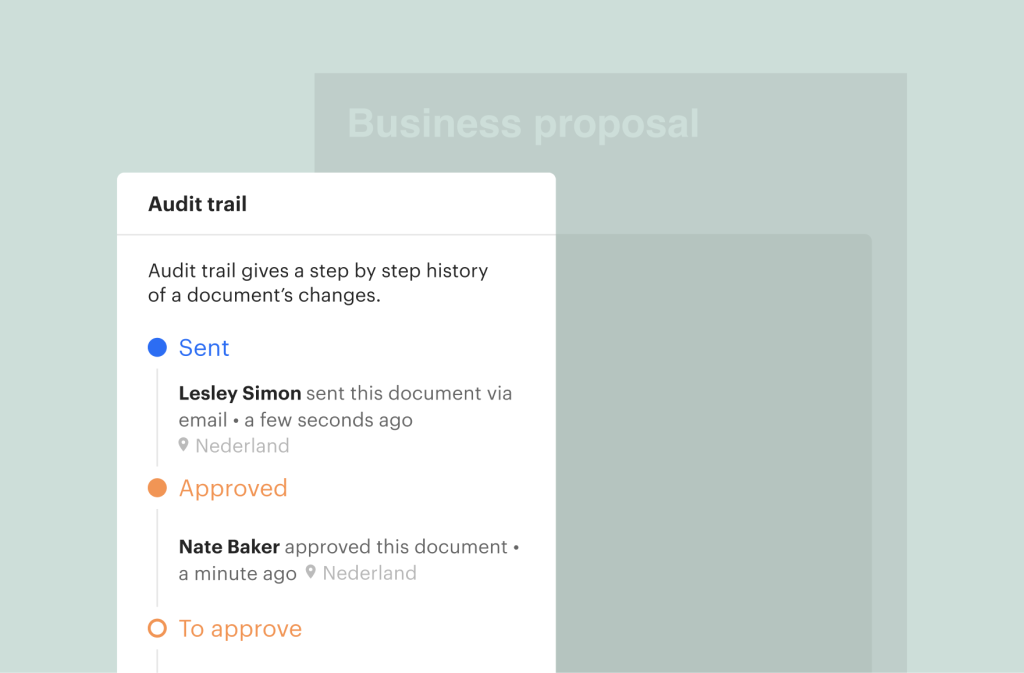
4. Study your value proposition
Your company has to show its customers why the contract value you offer is worth it.
That means demonstrating exactly how your products solve problems and/or make daily workflows easier and more efficient to complete.
Of course, there’s a difference between figuring out how to show off your value, and showcasing every last feature you can possibly offer in your enterprise sales strategy.
Not every functionality is relevant to every company, so it’s important to tailor your propositions to the people who’ll be hearing about them.
It’s always helpful to have an expansive list of valuable features available, so your sales reps can pick and choose the most important ones depending on the customer.
5. Present a clear pricing model
It’s understandable if your outreach efforts don’t involve outlining your prices in detail right from the start.
However, at least in the stage when you’re getting to know your customer, you’ve got to be sure to provide all the information they’ll need regarding your prices.
This is a crucial component of the enterprise sales methodology.
It can be very helpful to schedule a discussion that involves a salesperson describing which pricing models you use for which types of sales.
This helps prevent confusion and miscommunication later on and ensures you and your customers are always on the same page.
Additionally, you can always provide information on at least your most common pricing options on your website.
This gives customers something to refer back to, further reducing the chances of miscommunications happening.
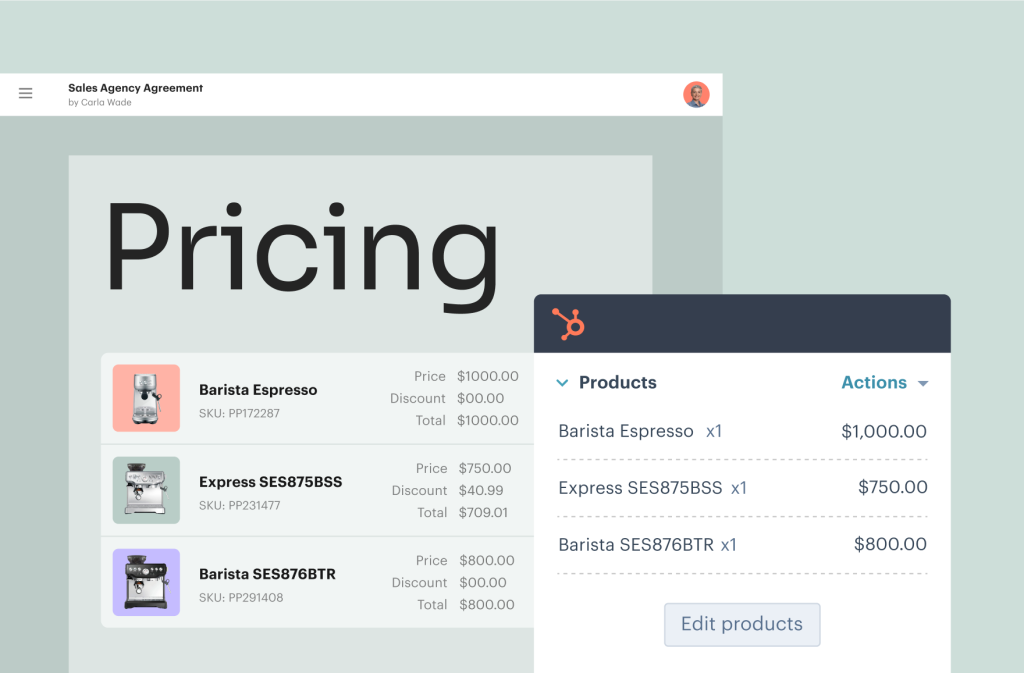
6. Ask for feedback
Accomplishing goals like accelerating your sales process is much easier when you’ve got tips, advice, and constructive criticism to guide you.
For example, maybe some of your sales templates have fundamental issues that others can pinpoint for you.
Or perhaps customers are finding some of your touchpoints much easier to use than others.
Either way, the experiences of the people who interact with your sales strategy are invaluable in helping you improve that strategy.
As you gather feedback, be sure you’ve got processes in place that help you follow-up on what you’re told.
This shows that you value both the feedback itself and the people (or groups) giving it, as you’re visibly doing something in response to their comments.
Drive revenue with an enterprise sale process
A well-planned enterprise sales process comes with a wide array of benefits.
From boosted customer success to more closed enterprise deals, you’ll drastically improve the way your company secures and treats its enterprise customers with the right process.
The information we’ve provided, alongside the tips outlined above, should help you get a strong head start in crafting the perfect enterprise sale process.
When crafting your company’s enterprise sales methodology, please pay particular attention to the point we’ve made about enterprise sales being a completely different matter from SMB sales.
Being skilled at one does not automatically translate to working well within the parameters of the other.
So, even if you’re a great SMB salesperson, you’ve got to be careful about using the same methods and tactics on enterprises.
How to boost your sales with an optimized enterprise sales process
Given the complexity and resource-intensive nature, selling to enterprise companies might seem like diving into the deep end—but with the right sales and automation tools, like the ones PandaDoc offers—you can simplify and smooth out the enterprise sales process.
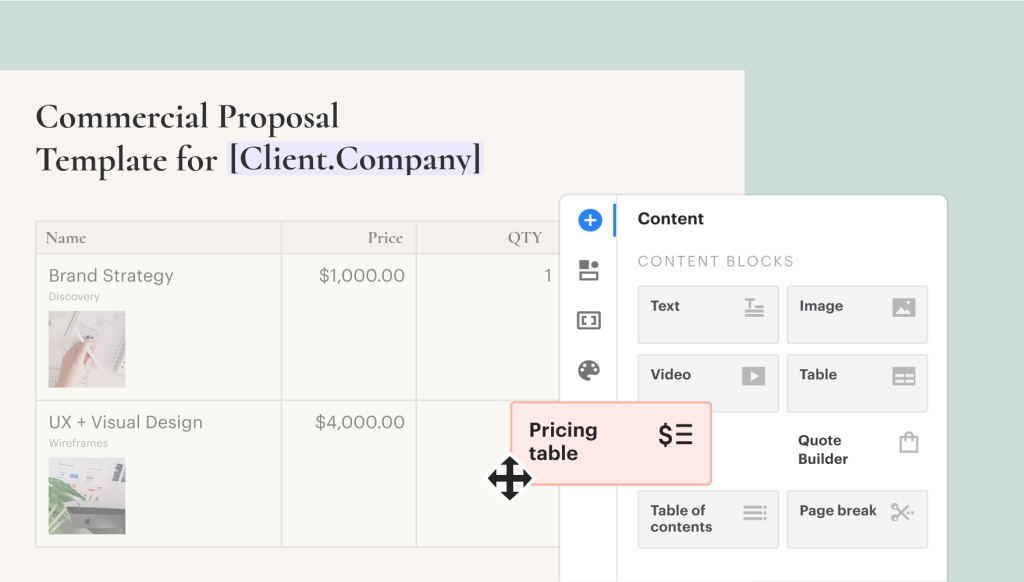
For example, the custom software development company Velvetech switched from manual processes prone to errors and lacking insight to a streamlined solution to boost efficiency and client satisfaction with PandaDoc.
Now Velvetech decreases proposal generation time by 65%.
With its suite of innovative tools and features, PandaDoc empowers sales teams like Velvetech to navigate the complexities of enterprise selling with ease and efficiency.
Whether you’re targeting enterprises or SMBs, PandaDoc can help streamline your sales process.
Schedule a demo to find out more.
Disclaimer
PandaDoc is not a law firm, or a substitute for an attorney or law firm. This page is not intended to and does not provide legal advice. Should you have legal questions on the validity of e-signatures or digital signatures and the enforceability thereof, please consult with an attorney or law firm. Use of PandaDocs services are governed by our Terms of Use and Privacy Policy.
Originally published March 1, 2023, updated September 3, 2024


